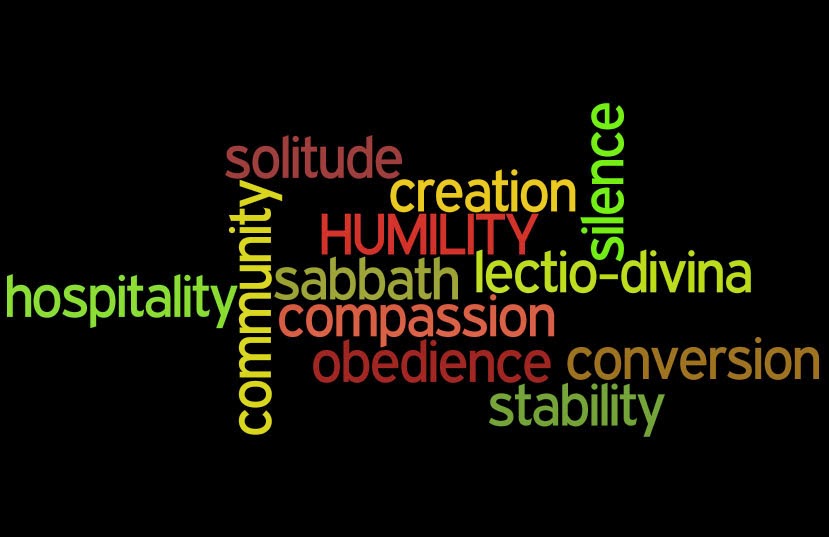EACH MONTH IN THE 12 STEPS OF HUMILITY WE ARE CLIMBING SAINT BENEDICT’S LADDER OF HUMILITY. WITH EACH RUNG WE COME CLOSER TO THE PERFECT LOVE OF GOD.
The ladder is our life on earth, if we humble our heart God will raise it to heaven. ~ St Benedict
THE SIXTH STEP OF HUMILITY:
A monk is content with the lowest and most menial treatment.
I know what it is to be poor or to have plenty, and I have lived under all kinds of conditions. I know what it means to be full or to be hungry, to have too much or too little. Christ gives me the strength to face anything. ~ Philippians 4:12-13
At first glance in the original language of Saint Benedict from 1500 years ago, this step seems to be putting ourselves down. In a way it is because we should let others go before us.
It’s important to remember the root word of humility: humus (dirt)!
We aren’t supposed to be the one to look for our promotion. Rather, we are to sit at the back and be asked to move up front.
We should be willing to accept the circumstances of life as they come; not thinking we are above certain things.
We are to be content with who we are, with what we have and where we are. Trusting God for the outcome as He can see around the corner of our life.
Humility is peace. It grasps life lightly and takes it as it comes. Humility steps lightly, not intent on having the now be more, but simply aware that the now can be better. Humility enables us to see that the present holds riches for us that we have not seen before because our eyes were focused beyond the present moment. ~ Joan Chittister**
We all go through times of adversity and trials. The key to knowing if our hearts are truly fixed on God is when the external challenges in our life don’t effect our moods.
Oh I wish I could say that I am there! But my practice is getting better. I’m learning to take myself back to my breath and ask:
What relationship do I have with this moment or this situation? Is it healthy or dysfunctional?
Am I accepting or resisting what I am? Who I am? Where I am?







